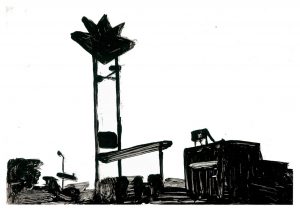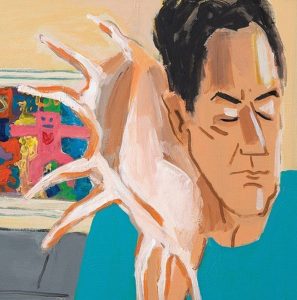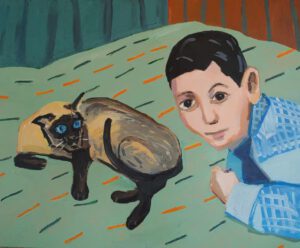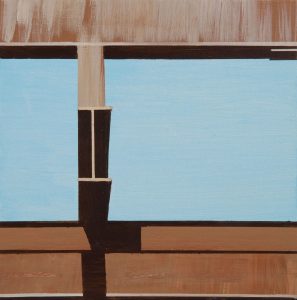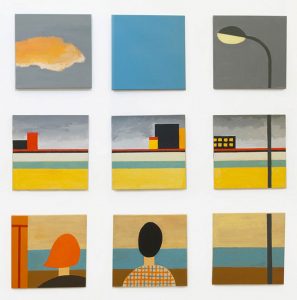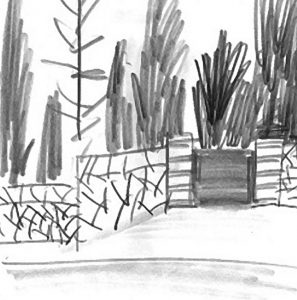“Us,” August 2020, Jerusalem Artists’ House.
Curator: Ilan Wizgan
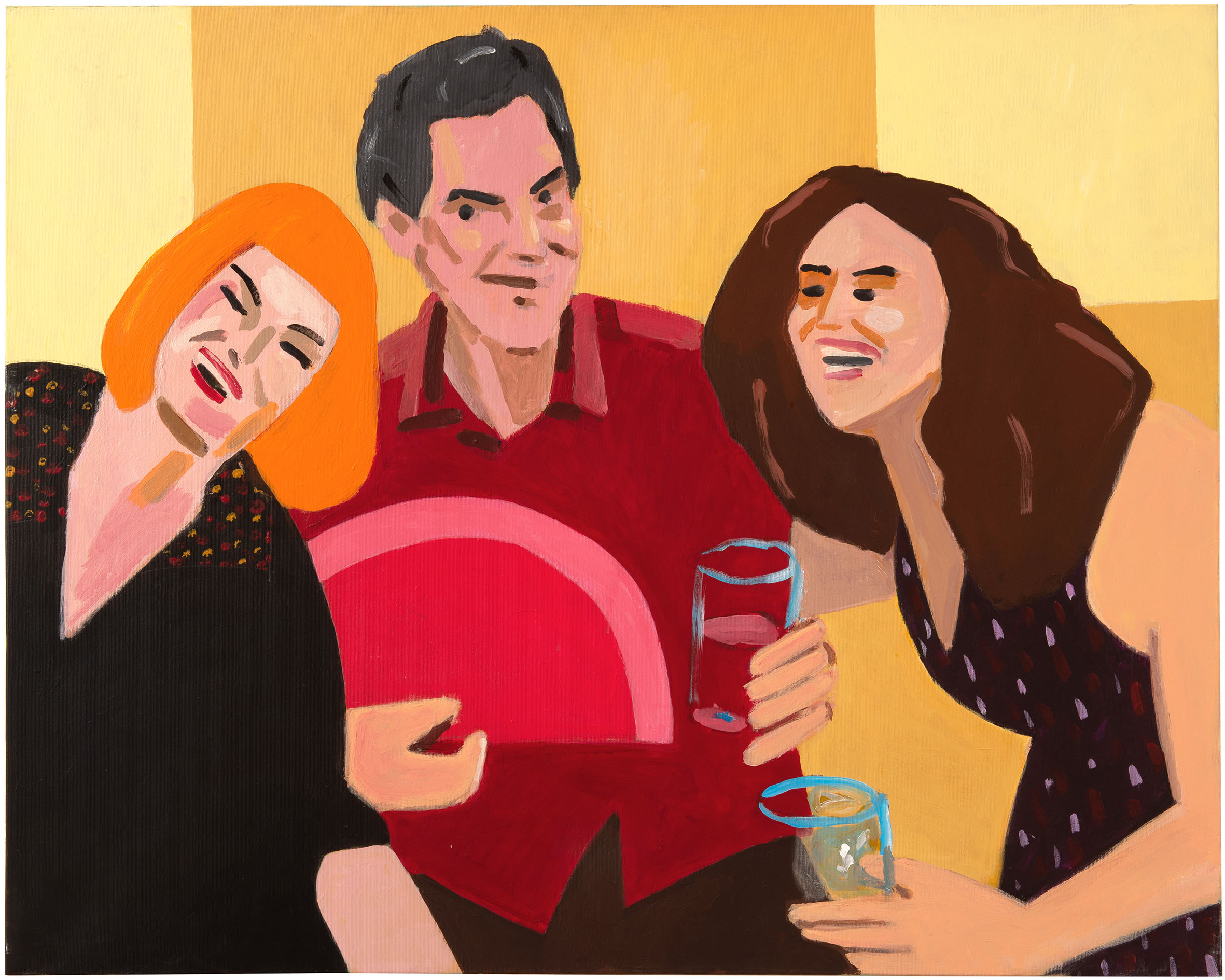
In Oded Zaidel’s current exhibition, the artist expands his relatively fresh engagement with painting figures after years of being identified mainly with paintings of places empty of people. Similar to his earlier works, here the individual and group portraits are divided into planes of color with architectural/geometric gestures. In his portraits, most made in the shadow of the Covid-19 pandemic, there is an evident impact or reference to Ori Reisman’s paintings: very little shading, flattening of fabric folds, with nothing more than the touches on facial features needed to characterize the figure. At times, when it seems to the artist that the form of the head, hair, and contour of the figure suffice to characterize the figure, the face remains featureless. Yona Wallach said about such reduction that “The face was an abstraction…and that was the work of art.”
Zaidel’s paintings are distinct in their own way: this is not direct painting of a model but painting from photographs, most of them selfies made by his wife, also an artist, at home in private settings, or at art openings. Thus this is doubled mediation – first, the photograph of the figures in a group, later they are isolated from the group, and painted on canvas. The nuclear family as the motivator for the artwork is important to the artist, expressed in the paintings of the two parents with their daughter, some on view here, and the actual use of photographs made by the artist’s wife as the raw material. From the family nucleus, the paintings take off into the social core, to the circle of friends and colleagues, who, after the deconstruction of the group photograph, receive individual treatment.
In discussing the selfie group painting, the one designed to commemorate and be evidence of the joint experience, Zaidel goes goes to the Old Masters, such as Diego Velazquez. Las Meninas, the well-known masterpiece by the Spanish artist, resonates through Zaidel’s group paintings. The spirit of this painting, enabling viewers to experience a scene with multiple figures from the painter’s and the subjects’ viewpoints hovers over Zaidel’s group paintings. In this way they are adopted into the historical continuum of documentation and commemoration, testimony to our being part of a single human fabric despite the gap of generations and differences in life circumstances.

